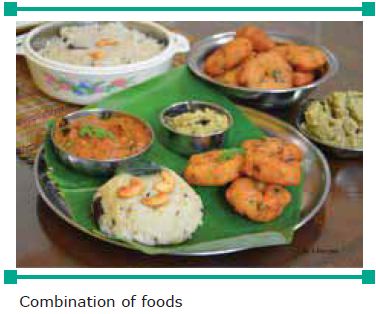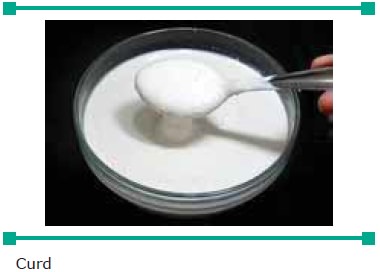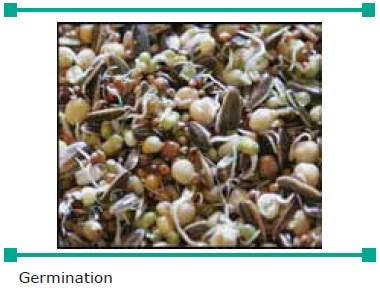of Nutrients - Fortification and Enrichment | 11th Home Science : Chapter 3 : Food Science
Chapter: 11th Home Science : Chapter 3 : Food Science
Fortification and Enrichment
FORTIFICATION AND ENRICHMENT
Fortification is adding nutrients to the food
even though the nutrient is already present in food. Fortification is done to
improve the nutritive value whereas the process of improving the nutrient
levels of nutrients which might be lost during processing in foods by special
methods is called Enrichment.
Importance of Enhancing Nutritive Value of Food
To meet the nutritional requirements of the
body.
·
To make proper selection and prepara-tion of foods.
·
To consume food in a balanced manner.
·
To improve the flavour and texture of the food.
·
To get variety in food.
·
To assist in planning the daily menu, keeping in view the
nutrient content of the food.
·
To prevent deficiency diseases in the body.
·
To develop good food habits.
Methods of Enrichment of Nutrients
There are three methods by which one can
enhance or increase the nutrients present in food.
·
Combination
·
Fermentation
·
Germination
i) Combination
Combination is the process of combining
cheaper and commonly available foods from different food groups to improve the
quality of nutrients.
Combining of foods from different food groups
is the easiest way of eating all nutrients.

Combination of foods improves the quality of
nutrients. Cereals lack certain essential amino acids and these are pres-ent in
dhals. On the other hand dhals lack some other essential amino acids that are
present in cereals. The quality of proteins becomes as good as that of milk.
The com-bination of a variety of foods ensures bet-ter availability of
nutrients.
Combination helps to
·
Eat a diet that has good quality nutrients.
·
Use cheaper and easily available foods that enhance the nutrient
content of food considerably.
·
Provide balanced diet to the family.
ii) Fermentation
Fermentation is a process in which some
micro-organisms are added to the food. They change nutrients already present in
the foods into simpler and better forms and also make other new nutrients.
Fermentation makes the dough rise and become almost
double in quantity. During fermentation the microorganisms use up some of the
nutrients present in the dough and change them into other better quality
nutrients. They also make some new nutrients.

Curd, bread, dhokla and idli are all examples
of fermented foods.
Advantages of fermentation
·
Fermentation improves the digest-ibility of foods. The
microorgan-isms which cause fermentation break the proteins and carbohy-drates
into smaller parts, which are easier to digest.
·
During fermentation of cereals and foods like peas, beans etc.
the minerals, calcium, phosphorus, and iron are changed into better quality
ones. These are then easily absorbed by the body.
·
Fermented foods become spongy and soft and are liked by children
and adults.
iii) Germination
Germination is a process in which small shoots
come out of the dhal or cereal when these are kept with small amount of water.
The grains and pulses to be sprouted need to be soaked in just enough water so
that all of it is absorbed. If the extra water in which they are soaked is
thrown away, a lot of nutrients are lost.

Grains like wheat, bajra, jawar, etc. can also
be sprouted. These grains can
They can be ground and used in many dishes. Pulses are also sprouted
first and then steamed and consumed. The time and water which each grain or
pulse needs for soaking and sprout-ing is different. Normally 8–16 hours are
needed for soaking and 12–24 hours for sprouting. The cloth in which the soaked
dhal is tied should be kept moist all the time.
Germination helps
i) Increase the digestibility of food
·
Some carbohydrates and proteins are broken down into smaller and
easily digestible forms.
·
Grains and pulses become soft after sprouting, so they take less
time for cooking and are easy for you to digest.
ii) Increase the nutritive value of food with
no additional cost
Some vitamins and minerals become more when
foods are germinated Vitamin B becomes almost double in quantity while vitamin
C increases almost 10 times.
Related Topics